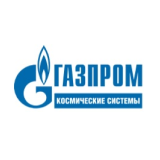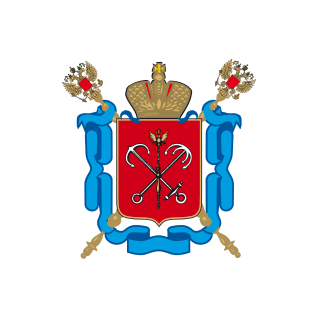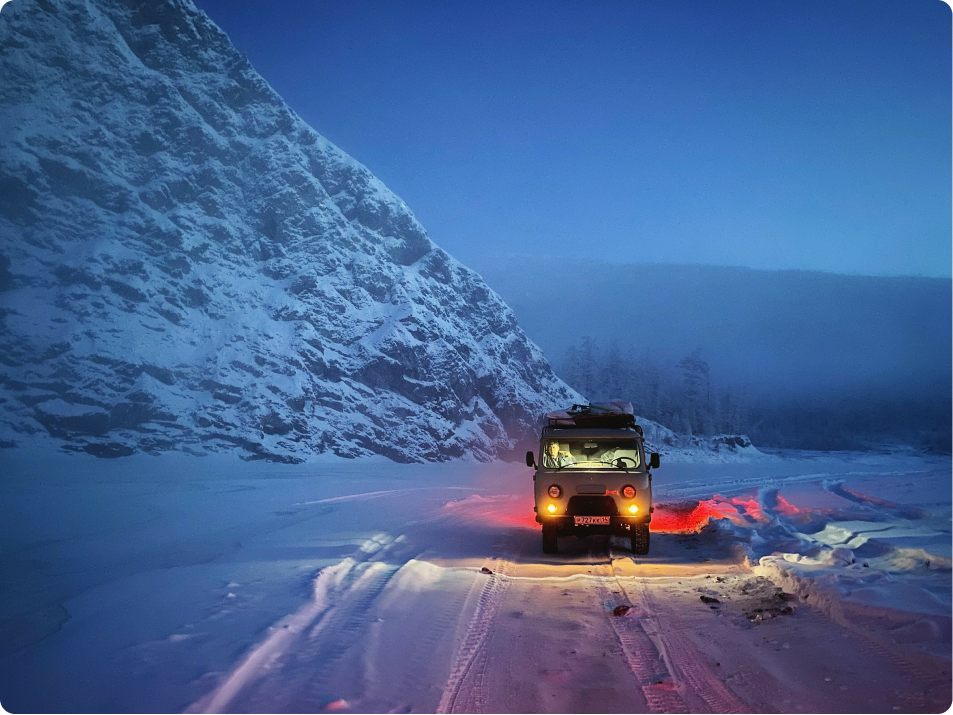This website uses cookies to ensure you get the best experience
OK



Welcome to the Cold Conquerors global challenge, the most extreme scientific expedition in the Earth's high latitudes.
This project is for those who are ready to stretch their human capabilities, contribute to the study of temperature extremes and record the lowest temperature of the year in an inhabited part of the planet. Some like it cold.




Welcome to the Cold Conquerors global challenge, the most extreme scientific expedition in the Earth's high latitudes.
This project is for those who are ready to stretch their human capabilities, contribute to the study of temperature extremes and record the lowest temperature of the year in an inhabited part of the planet. Some like it cold.





Status:
Extreme challenge tour as part of an annual international scientific field expedition
Timeline:
January 10–February 1, each year
Duration of Expedition:
21 days
Duration of Challenge Tour:
from 10 to 22 days (on an individual basis)
Geographic Target:
Pole of Cold in the Northern Hemisphere
Coordinates:
Territory within the boundaries of 106°–163°E and 55°30'–74°N, Verkhoyansk and Oymyakon settlements, Republic of Sakha (Yakutia), Russian Federation, Northern Hemisphere, planet Earth
Scientific Objective:
To investigate the areas near the Pole of Cold in the Northern Hemisphere, take temperature measurements, record the lowest temperature in the inhabited part of the planet following a year of measurements and communicate the data to climate researchers
Personal Objective:
To experience life far from civilization with sensory deprivation and an information and social "detox," all the whole testing one's physical and mental powers under extreme conditions to win the status of the Cold Conqueror by setting a personal temperature record
if the living conditions in such extremely low temperatures become unbearable, participation can be terminated upon request
Human civilization faces the challenge of climate change and the threat of global warming. The global scientific community and the meteorologists of leading countries are searching for solutions.
The focus is on the dynamics and geography of changes in extremely low temperatures in the planet's so-called Poles of Cold: in areas where the history of scientific research has recorded the lowest temperatures.
The focus is on the dynamics and geography of changes in extremely low temperatures in the planet's so-called Poles of Cold: in areas where the history of scientific research has recorded the lowest temperatures.
Global Challenge for the Good of the Planet
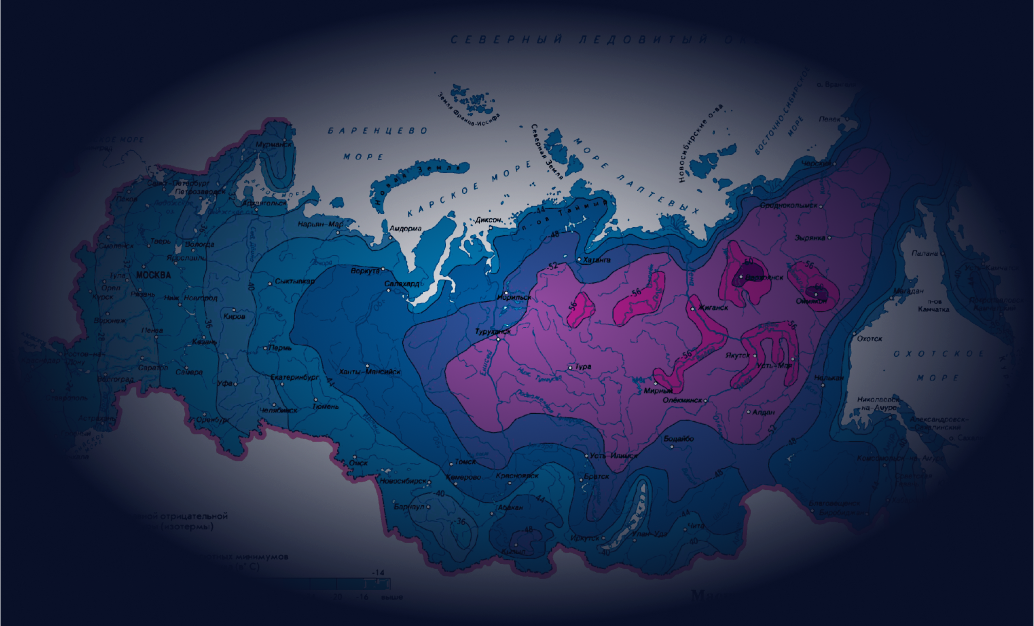
The search for new locations with extremely low temperatures near the Poles of Cold, where there have never been meteorological observations, is ongoing.
Data on changes in the coordinates of temperature lows and statistics on absolute minus temperatures of the Earth allow scientists to understand how the climate will behave in the coming decades and what threats humankind faces. Only with this information can appropriate solutions be developed.




The lowest temperatures in the coldest regions of the planet are monitored by orbiting weather balloons. However, the dynamics of warming processes makes it extremely important to monitor low temperatures on the ground. And while the location of the Pole of Cold of the Earth's Southern Hemisphere is defined precisely (it is located in the control zone of the permanent Russian ground station Vostok in Antarctica), there are active disputes about the location of the Pole of Cold in the Northern Hemisphere.
Cold Conquerors: Challenge Accepted!
The only thing we know for sure is that, contrary to popular belief, it is located not at the North Pole, but in the inhabited part of the Earth: in remote and poorly explored areas of Yakutia, Russia, between the town of Verkhoyansk and the village of Oymyakon, in the heart of Siberia. Ground measurements are still difficult and irregular there.
The super extreme scientific expedition Cold Conquerors will solve the issue of annual recording of temperature lows in the vicinity of the Pole of Cold of the Northern Hemisphere. The global challenge will unite scientists and independent leaders who will "hunt" for the record low temperatures in the Yakut taiga each year for 21 days to contribute to the fight against climate change as well as unravel the mysteries of the northern Pole of Cold.

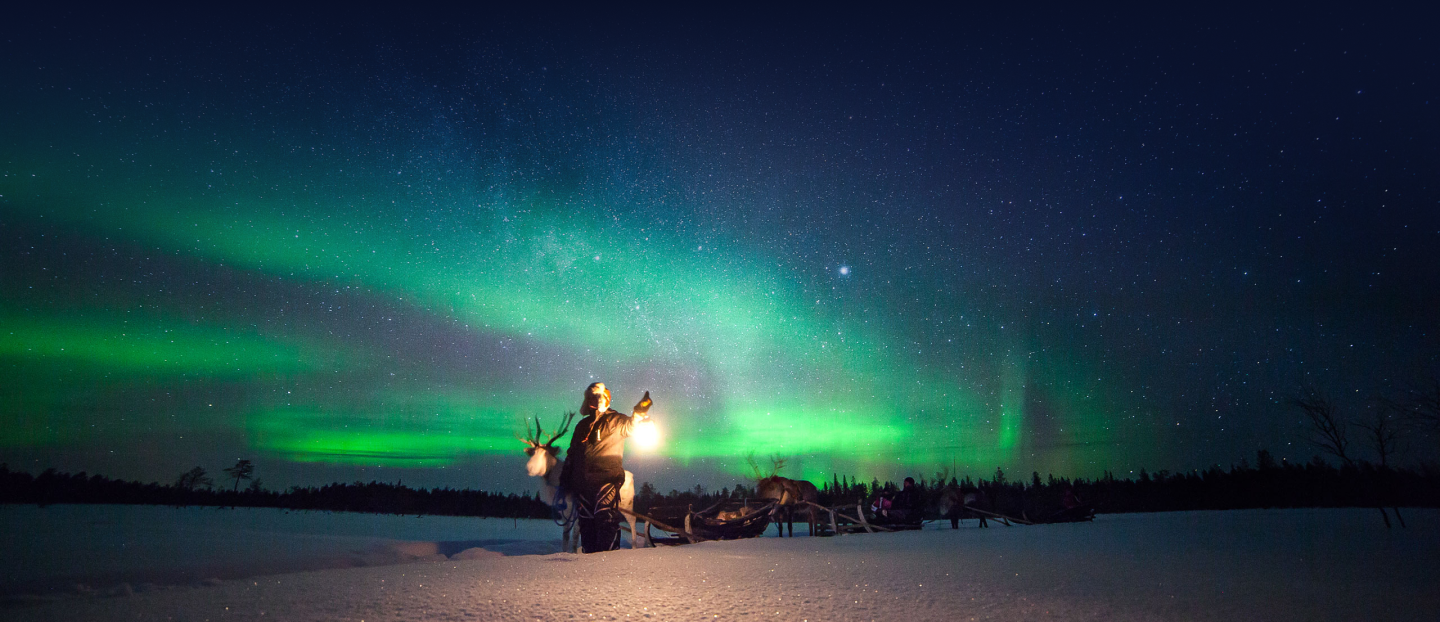



For more than 100 years, the status of the coldest settlement on Earth has been disputed by two settlements in the north of Yakutia: the town of Verkhoyansk and the village of Oymyakon, 626 kilometres away from each other.
The difference between their official temperature records is only 0.1°С.
The difference between their official temperature records is only 0.1°С.
Enigma of the Northern Pole of Cold
Lowest temperature in the Oymyakon settlement in January 1938. Mathematically calculated by academician Obruchev. It is not confirmed by physical measurements and thus is not recognized by official science. This data strengthens the position of the supporters of Oymyakon as the Pole of Cold of the Northern Hemisphere, the coldest settlement in the inhabited part of the Earth.






Lowest temperature in Oymyakon, calculated by academician and geologist Sergei Obruchev in 1926. The scientific community did not officially recognize it as it was not documented. Supporters of Oymyakon as the Pole of Cold continue to refer to this indicator and to the fact that the average annual winter temperatures in Oymyakon are lower than those in Verkhoyansk.
Temperature recorded in 1892 in Verkhoyansk by Russian scientist Sergei Kovalik. Based on this data, Verkhoyansk was officially recognized as the Pole of Cold of the Northern Hemisphere. A number of researchers doubt the record: at the time of its fixation there were no meteorological observations in the competing settlement, and the measuring equipment of the Verkhoyansk meteorological station was imperfect and could be in error by a fraction of a degree.
The officially recognized lowest temperature in Oymyakon. It was registered by the Oymyakon meteorological station in Tomtor area in 1933 and is not disputed by the supporters of either of the record-breaking settlements. It is 0.1°C warmer than the Verkhoyansk minimum.
The absolute lowest temperature adopted both for Verkhoyansk and Oymyakon for the purpose of unification of construction norms on January 1, 2003 in accordance with the Resolution of the State Construction Committee of Russia No. 164 of December 24, 2002.

The team of polar meteorologists and a small group of enthusiasts who decided to pass the test of extremely low temperatures will go to the Pole of Cold of the Northern Hemisphere – to Oymyakon and Verkhoyansk regions of Yakutia – in the statistically coldest period of the year.
Science & Insights for Leaders
The challenge is to determine the exact location of the absolute temperature minimum of the inhabited part of the Earth for the year of measurements, to "catch" and document the lowest temperature record and then pass this data to climatologists working on global warming.
Expedition's results will form the basis for scientific developments designed to slow down the climatic processes endangering human civilization.


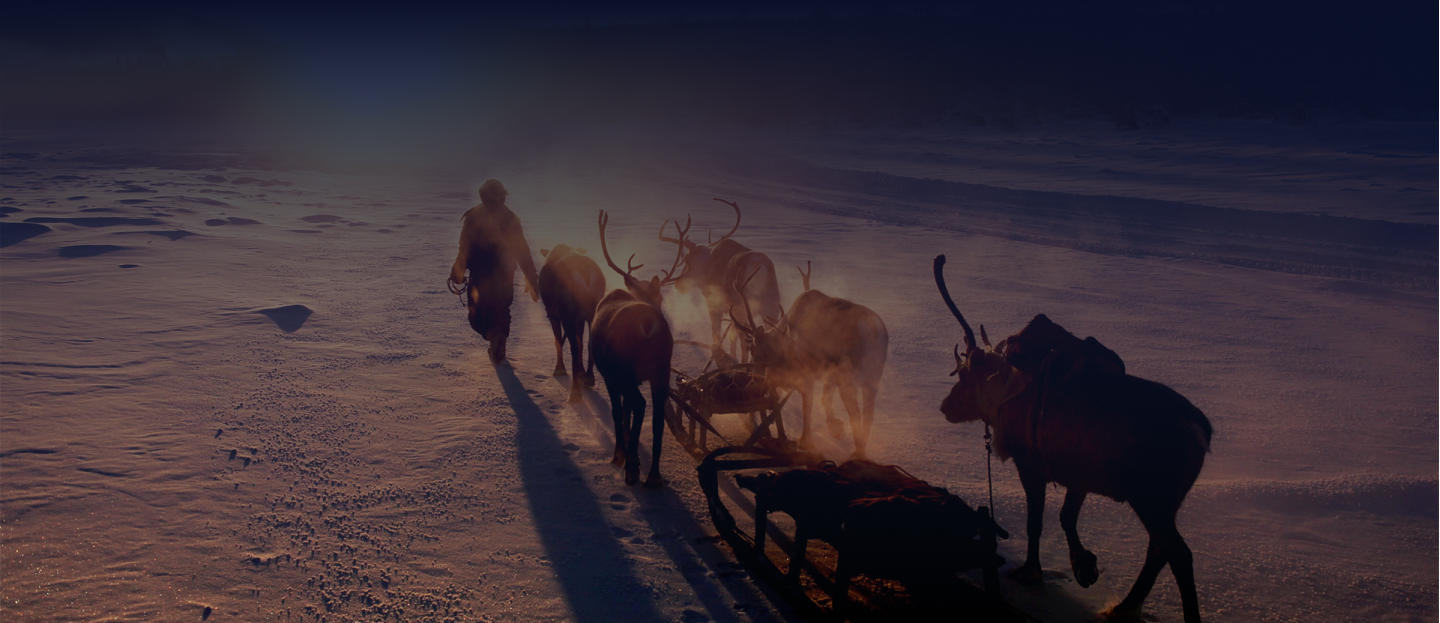

Almost like in space, where the thermometer does not rise above −50 degrees Celsius, alone with themselves and surrounded by wildlife, Cold Conquerors will cover hundreds of kilometres of Yakutia's white silence on deer sleds.
Terra Incognita: How Will It Be
Traveling through the taiga around these camps on deer sleds, participants of the global challenge will take temperature measurements with high-precision equipment and transfer their data to expedition headquarters.
Base camps will be set up in places of possible temperature extremes with the help of indigenous guides from the Far North.









Challenging oneself offers the most valuable life lessons. Climbing Everest, vipassana and ayahuasca practices and the Ironman Challenge, just like Cold Conquerors, are primarily about personal transformation, confronting the present self and willingly choosing hardship.
Survival School: Regeneration
For such a person, harsh circumstances are not a problem but an opportunity. Diversity in the world in its extreme manifestations sharpens the senses and mobilizes resources, attracting strong and curious people. It is these people, their personal experiences, that excite interest and attract the attention of others. It is these people whom the global challenge Cold Conquerors targets.
A leader does not need to prove their accomplishments to anyone, they do not need anyone's recognition.





Due to the specific nature of the studied location, no more than 6 or 10 persons per year can set a planetary temperature record by joining the expedition as part of the challenge tour.
Become a Participant of the 2023 Expedition
The necessary requirements are stress resistance, physical and mental health, readiness for an increased workload and temporary isolation from civilization. If you want to pass the frost test, please fill in the application form.

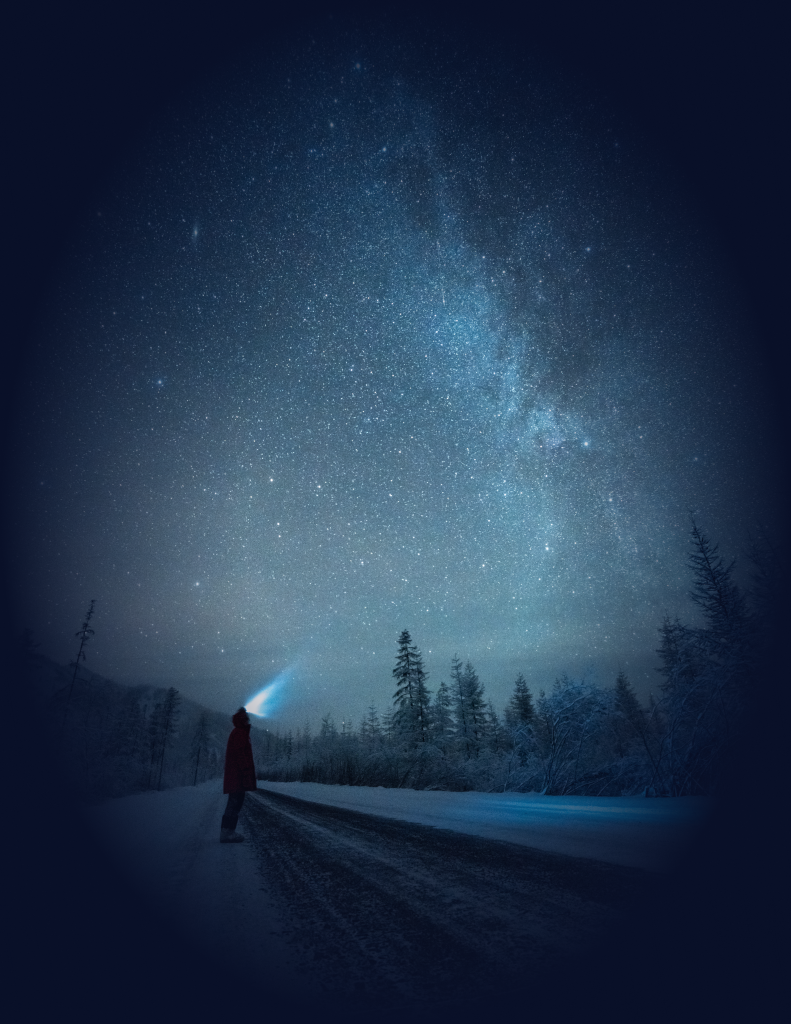



The cost of participant
starts from USD 35 000.
Yakutia is a huge territory in north-eastern Russia, in the heart of Siberia, little studied and unexposed to mass tourism. When you describe Yakutia, the word "most" is not a mere advertising trick but a hard fact: it is the world's first in many ways. Even the most sophisticated travellers get a fundamentally new experience here.
Welcome to one of the few places on Earth where you can feel like a true pioneer!

Following the expedition route, participants of the Cold Conquerors challenge will not only record the lowest temperature on Earth, but also become the discoverers of the pristine Yakut nature in all its beauty and the culturally unique Northern indigenous minorities.
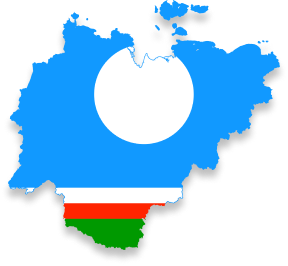



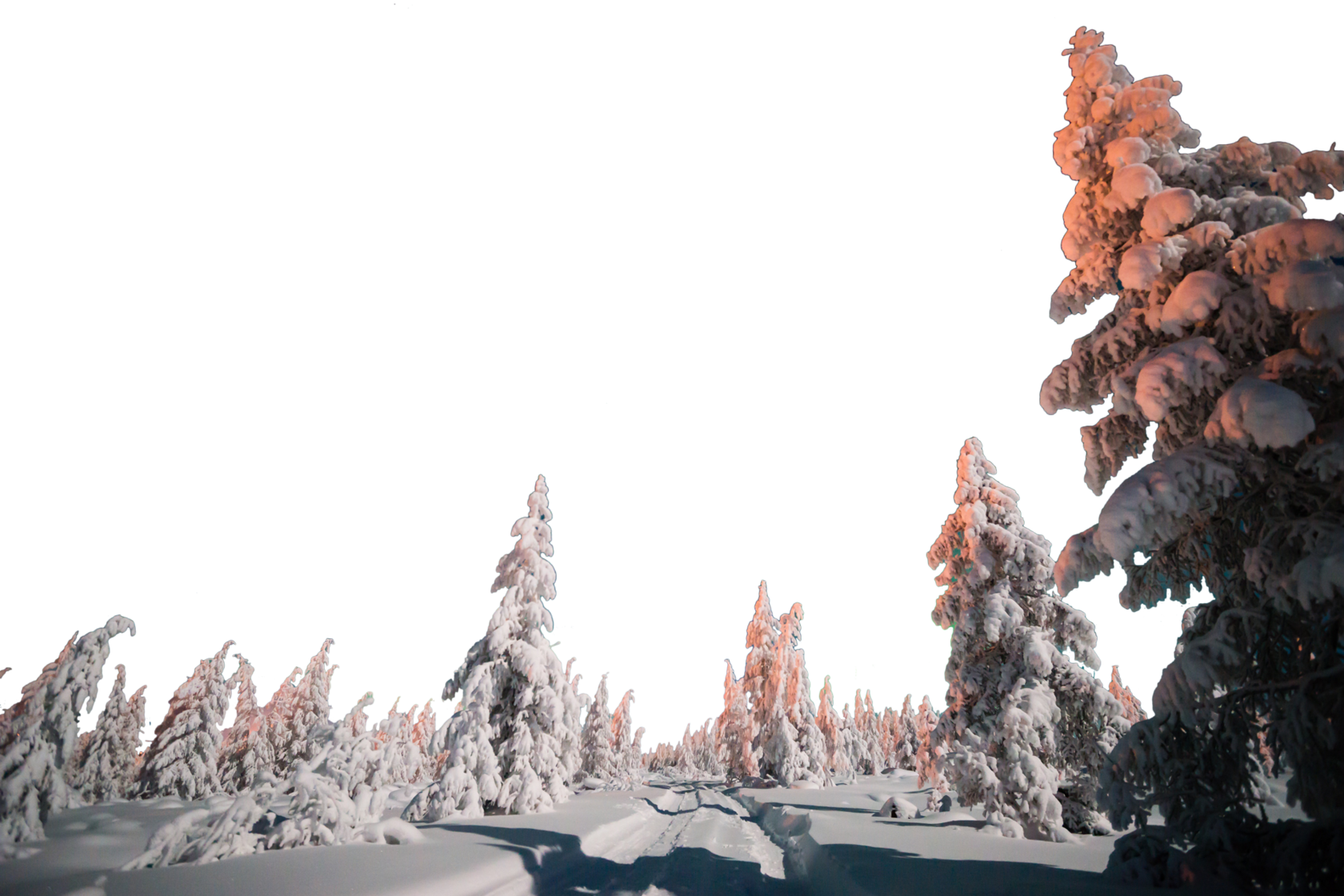

It is merely 0.00002% of the world's population or one in 5.5 million people
Who Visited
the Pole of Cold?*
1,371 travellers
It is just over 25% of countries; the Pole of Cold remains terra incognita for representatives of 75% of countries
Nationals
of 50 states
of 50 states
Perhaps you will be the first citizen of your country to visit the coldest inhabited place on the planet
More than 50% of those who visited the Pole of Cold are Russians and Germans

Russia - 656 people (47.8%)

Germany - 151 people (11.0%)

France - 77 people (5.6%)

China - 72 people (5.3%)

Japan - 57 people (4.2%)

Great Britain - 32 people (2.3%)

Switzerland - 27 people (2.0%)

Poland - 26 people (1.9%)

Italy - 25 people (1.8%)

USA - 23 people (1.7%)


actor, film director, musician, martial artist
In Their Own Words
Steven Seagal

"Yakutia is an amazing place. I get a very special feeling here. Maybe it's my blood calling. We took DNA tests and learned that I have ancestors from Baikal and Yakutia. In general, I'm a Russian Mongol. Yakuts also belong to the Mongoloid race, so their culture is my culture."
"This is the coldest piece of land I've ever seen. I've always dreamed of going to Siberia. Delightful nature and very hospitable people. I couldn't refuse them: I swam in an ice-hole and even went to the sauna where I was beaten with branches. It was awesome."
"We were very tired, we ate and slept very little... But all this was compensated by the beauty of Yakutia and its people; I was pleasantly surprised by the concise Russian speech, hospitality, elegance."


Tom Hardy
Natalia Vodianova
actor, producer, screenwriter, BAFTA award winner, Oscar nominee
supermodel, president of the Naked Hearts charity foundation
professional boxer, light heavyweight absolute world champion
Roy Jones Jr.

"Yakutia has made a very powerful impression on me. It's freezing, but also stunningly beautiful. I was told that despite the cold, there's warmth coming from the people. Now I've seen it for myself."
"My girlfriend's parents live in Siberia, and I was very interested to visit these parts. Have you ever seen snowdrifts in Yakutsk? This is something incredible! I just didn't know how to walk on them."
"Yakutia is home to the coldest inhabited place not only in Russia, but also on Earth. The region is extremely vulnerable to climate change - rising temperatures pose a major threat to its indigenous people, their way of life and their natural habitat."


Jesse Eisenberg
Leonardo DiCaprio
theatre and film actor, writer, playwright, Oscar and Golden Globe nominee
actor, producer, Oscar, Golden Globe and BAFTA winner



Yakutia is the largest territorial entity in the world in terms of area
Yakutia:
Pure Facts
The size of the Republic of Sakha boggles the mind: it is more than 3 million square kilometres. Yakutia is larger than most countries, being the largest administrative and territorial unit in Russia and the world. The republic is larger than any country in Europe or Asia. It can fit Ukraine, France, Spain, Germany, Norway, Finland and Japan all at once.
#1
time zones, hours ahead
Yakutia is so large and so remote from the centre of Russia that its territory is divided into 3 time zones. The time difference between Moscow and Yakutsk, the capital of the region, is +6 hours.
3
and 400 metres of permafrost: it is the coldest permanently inhabited region of the planet
In Yakutia, scientists have recorded the lowest temperatures in a permanently inhabited area, much lower than at the North Pole. Extreme frosts in winter are normal in the republic. Almost half of the region's territory is located beyond the Arctic Circle, in the permafrost zone. For example, cars here are equipped with double glass windows, because in winter they immediately freeze and become covered with frost. There is summer in Yakutia, too, but it only lasts 2 months. In the hottest period – in July – the temperature can rise up to +38°C. So, the annual temperature amplitude in Yakutia is more than 105°C, which is also a world record.
-71,2°С
It is one of the richest regions in the world in diamonds: a quarter of the world's diamond reserves is here.
In addition to diamonds, which are the hallmark of Yakutia, gold and other rare metals, as well as oil, gas and coal are produced here in large quantities.
¼
years: the oldest northern human settlement and the largest number of skeletons of ancient animals
There were people living on the territory of modern Yakutia more than 6 thousand years ago. The oldest northern encampment of homo sapiens is the republic's latest record; it was discovered during archaeological excavations in the Novosibirsk Islands in 2018. The largest number of remains of ancient animals – mammoths, musk sheep and bison – have also been found in Yakutia, preserved in permafrost. One of the latest findings is a mammoth skeleton with preserved soft tissue found in 2018 by scientists of a Russian-Japanese scientific expedition.
>6000
rivers, 800,000 lakes, surviving forests, rare animals and Northern Lights
Yakutia is a land of impressive diversity in landscape, flora and fauna. It has one of the lowest population densities in the world: only 0.31 people per 1 km². Almost 2/3 of Yakutia are mountains and plateaus. The rest of the territory is taiga, tundra and numerous water bodies. The total length of all Yakut rivers is over 2 million kilometres. The largest of them, the Lena, is known all over the world for its unique stone forest that stretches for dozens of kilometres along the coast. The Lena Pillars are in the UNESCO World Heritage List. In Yakutia, you can witness stunning natural phenomena, such as the Northern Lights, and meet deer, elks, polar and brown bears, Yakutian horses, lynxes, wolves and bighorns.
700 000


This includes 20 days of expedition of which 19 days will involve temperature measurements. Participants themselves decide how long they are going to stay, given the expedition's harsh conditions. To increase the chance of "catching" the planet's lowest temperature of the year and setting a personal record, the maximum length of stay in base camp is recommended. The duration of the expedition can be extended by 1 week by prior request of a challenge tour participant.
The Cold Conquerors 2023 expedition will take place from January 10 to February 1, 2023 near the Pole of Cold of the Northern Hemisphere.
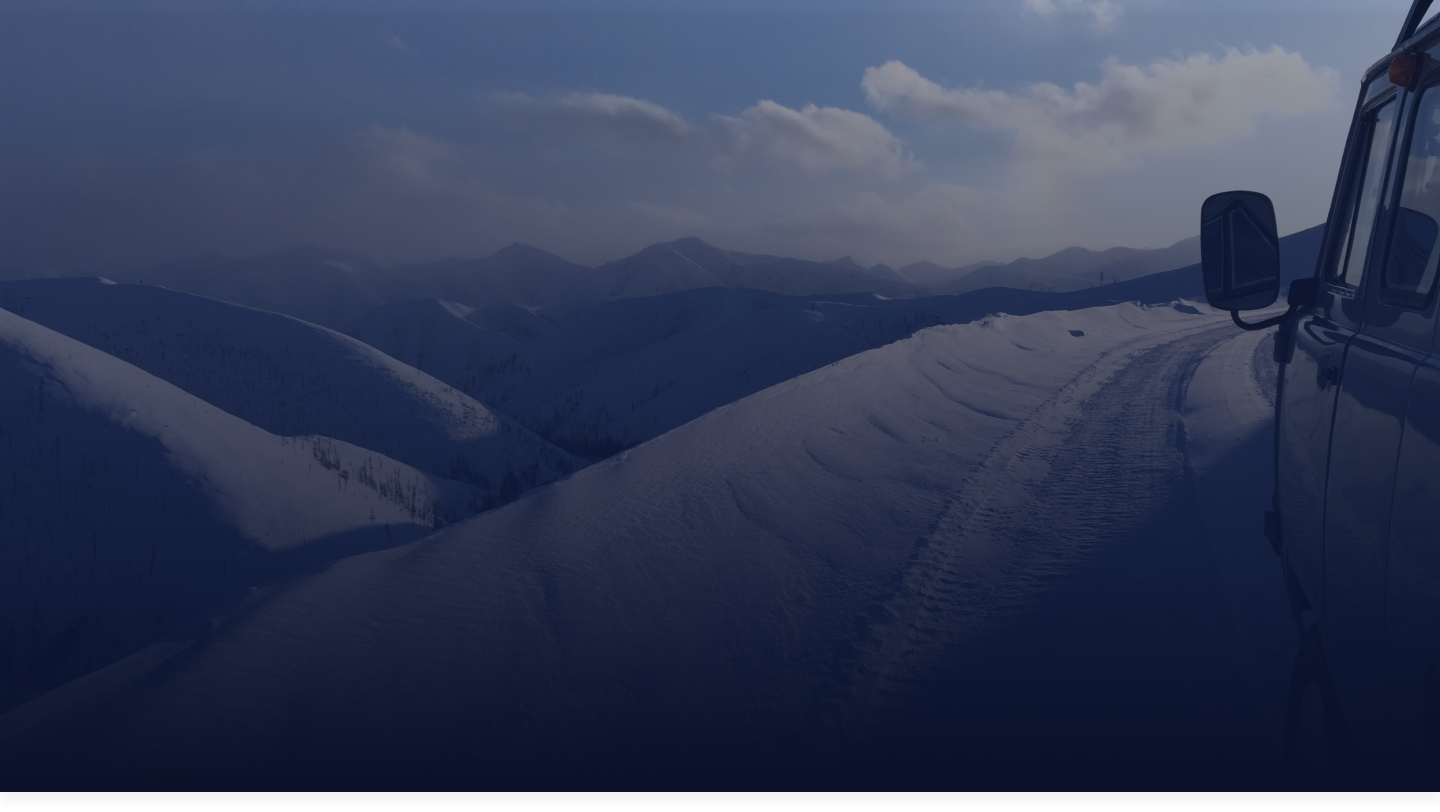

22 days
Participants will be divided into two groups. According to the results of the draw, one of the groups will camp in Oymyakon and the other in Verkhoyansk settlement of Yakutia.
2 base camps
Each group consists of one inspector scientist, two indigenous guides and two challenge tour participants.
5 people in each group
A tent for the inspector scientist and participants of the challenge tour, a tent for the guides, a tent for the storage of provisions and equipment, a personal-hygiene tent (a field bath, a toilet, water). By additional agreement, individual tents can be provided for the participants.
4 tents at each base camp
100% measurement accuracy
Temperature measurements are carried out at base camps at 6:00 a.m., 9:00 a.m. and 12:00 p.m. using standard Stevenson screens for low-temperature measurement equipped with alcohol thermometers according to the method approved by the Federal Service for Hydrometeorology. Observation data is logged, recorded on video and transmitted to expedition headquarters via satellite Internet connection. In addition, daily measurements are carried out by expedition method: challenge tour participants on deer sleds accompanied by tour guides take turns to search and tour the area within a 10–15 km radius from the base camp, where low temperatures can occur.. The temperature outside the base camp is recorded by a mobile meteorological complex, which includes a portable Stevenson screen on a tripod, a TM-9 alcohol thermometer and a digital thermometer. This data is also recorded on video and in the expedition log and then transmitted to the expedition headquarters.
5 Survival School courses
Despite the fact that the safety of scientists and participants is constantly monitored by the Ministry of Emergency Situations, the expedition teams themselves perform all daily camp activities, such as heating, provision of water and food and arranging movements in the taiga. In order to develop the researchers' skills of living in extreme cold, the reindeer herders – native inhabitants of the Pole of Cold – will teach them to cook traditional dishes, winter hunt and fish, catch deer and steer reindeer sleds, instal temporary shelters, gather firewood and drinking water and make warm clothes.






Transport
• airplanes
• helicopters
• automobiles
• snowmobiles
• reindeer sledding
• helicopters
• automobiles
• snowmobiles
• reindeer sledding
Life Support
• furnace-heated tents insulated with deer skins
Infrastructure and Security
• gasoline generators at each base camp
• sanitary tent
• Iridium satellite phones with Internet access
• private radio stations to communicate with other participants
• warm outfit and national costumes of indigenous reindeer herders
• daily monitoring by the emergency services of the Ministry of Emergency Situations
• sanitary tent
• Iridium satellite phones with Internet access
• private radio stations to communicate with other participants
• warm outfit and national costumes of indigenous reindeer herders
• daily monitoring by the emergency services of the Ministry of Emergency Situations
Measuring Equipment
• stationary Stevenson screens for low temperature measurement at base camps with two alcohol thermometers TM-9-2 and TM-2
• mobile meteorological complexes for temperature measurement by the expedition, including portable Stevenson screens on a tripod, TM-9 alcohol thermometers and digital thermometers
• mobile meteorological complexes for temperature measurement by the expedition, including portable Stevenson screens on a tripod, TM-9 alcohol thermometers and digital thermometers
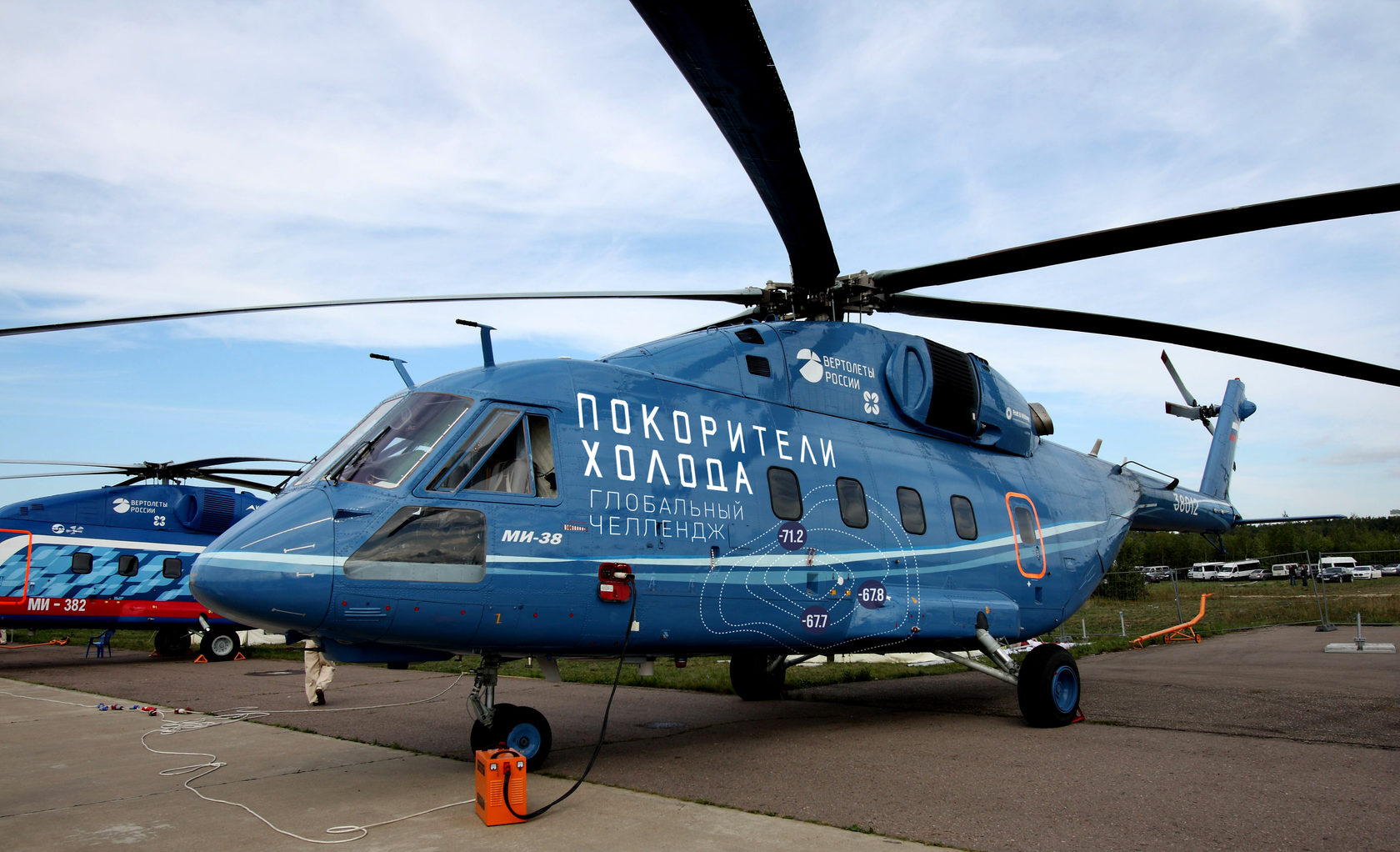


Short Expedition Programme

January 10
January 10
Arrival in Yakutsk. Press conference with the participants and the Organizing Committee (if they wish, participants of the challenge tour can remain anonymous and not take part in any media events). Review of the temperature data for the upcoming observation period. Accreditation of participants. Drawing of lots of expedition sites, dividing into groups. Equipment checks. Overnight stay at a hotel.
January 11
January 11
Departure together with an escort team to base camp locations. Flight to Batagai settlement (Verkhoyansk group) and Ust-Nera settlement (Oymyakon group), then transfer by helicopters or cars (in case of non-flying weather) to the base camp sites. Arrival at the base camp sites. Getting acquainted with the guides, setting up camp, installing satellite equipment. Overnight stay in tents.
January 12
January 12
Learning the stationary and mobile methods of temperature measurement, the Survival School programme and unique properties of cold. Departure of the expedition's escort team to Yakutsk.
January 13–30
January 13–30
Daily measurement of temperature at base camps, field trips with a guide for mobile temperature measurements and transmission of the data to expedition headquarters. Maintenance of base camp operations. Learning how to live in extremely low temperatures at the Survival School; hunting and fishing. Weekly field bath.
January 31
January 31
Temperature measurement in Stevenson screens, transmission of the received data to project headquarters. Departure of the expedition members for Batagai settlement (Verkhoyansk group) and Ust-Nera settlement (Oymyakon group). Departure by regular flights to Yakutsk. Meeting, transfer to the hotel, lunch, rest. Processing of temperature measurements gathered by expedition groups. The final press conference with the announcement of the 2023 temperature record for the inhabited part of the Earth, award of the expedition participants. Farewell dinner, rest at the hotel.
February 1
February 1
Departure from Yakutsk to Moscow or St Petersburg. An individual programme will be organized for participants who wish to visit the sights of Yakutsk and the Lena Pillars (a UNESCO World Heritage Site).
Please note that due to the specific nature of the studied location, no more than 5 or 6 persons a year can join the expedition as part of the challenge tour.
Become a 2023 Cold Conqueror



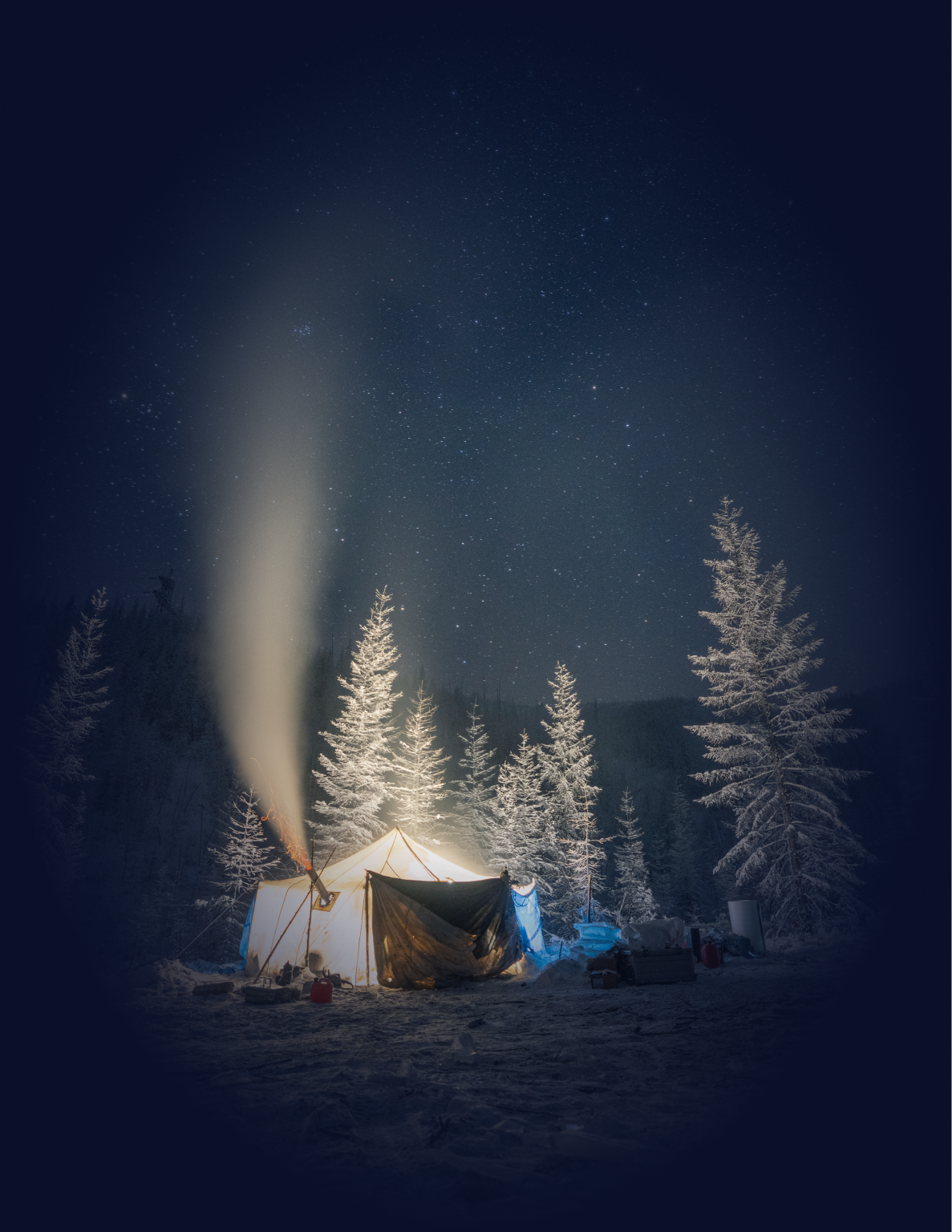

Operator of the Cold Conquerors project and the copyright holder of the corresponding trademark is Cold Conquerors LLC. The expedition is supported by the Government of the Republic of Sakha (Yakutia) in partnership with key R&D expert centres: the Russian Geographical Society, the Permafrost Institute of the Russian Academy of Sciences and the Federal Service for Hydrometeorology, and is sponsored by companies and private donors who also believe in the importance of scientific research of global climate change for future generations.
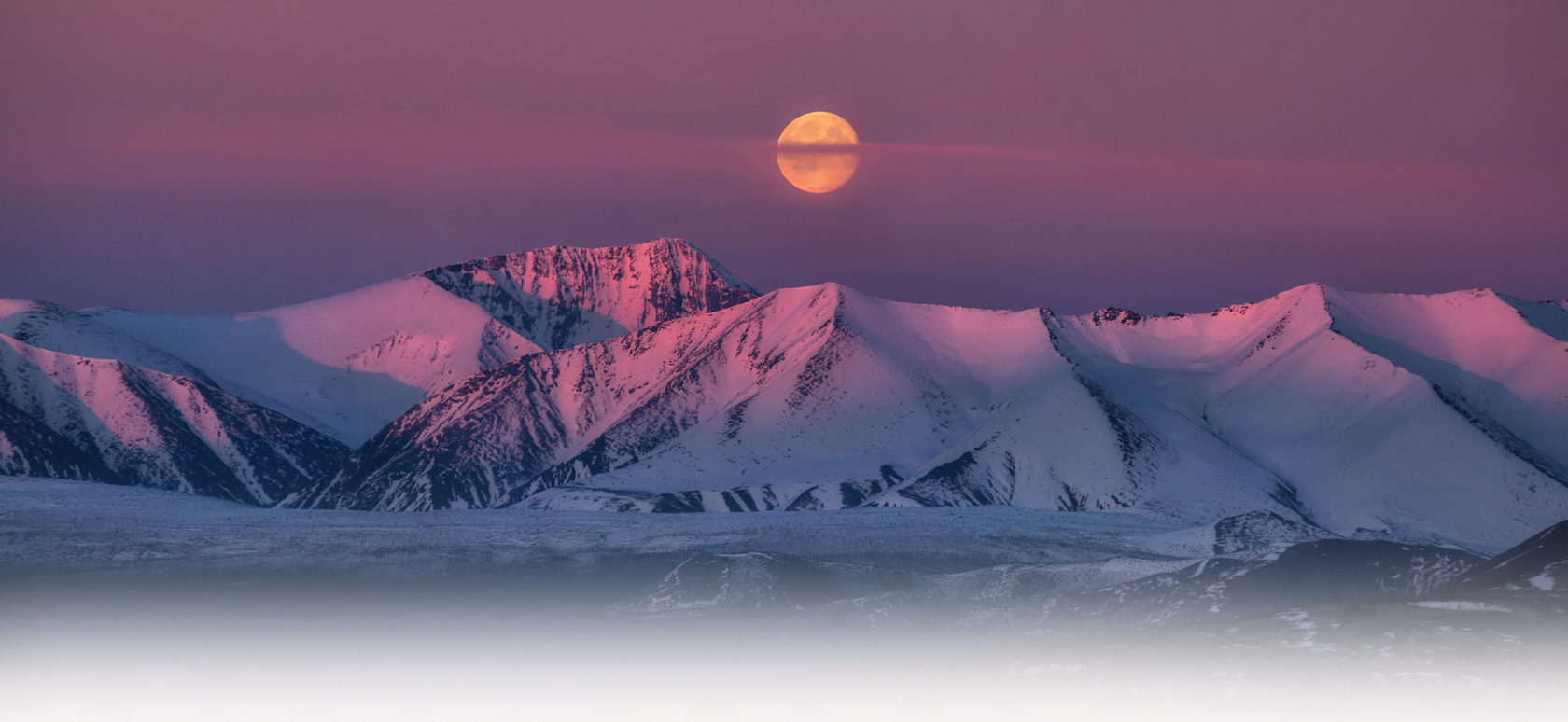


Government of the Republic of Sakha (Yakutia)
Russian Geographical Society
Permafrost Institute of the Russian Academy of Sciences
Federal
Service for Hydrometeorology
Service for Hydrometeorology
Gazprom Space Systems
"The idea to organize an expedition to find the lowest temperatures in the inhabited part of the Earth came to me about 15 years ago. At that time, I brought a group of German amateur meteorologists to Oymyakon settlement. The Germans assembled an interesting map of meteorological data: in the settlement itself within a two-kilometre radius the temperature ranged from −48.8˚C to −51.6˚C, i.e. it fluctuated by 2.8 degrees, while Oymyakon and Verkhoyansk compete for the title of the coldest settlement on Earth because of a 0.1-degree difference. What happens to the temperature in other areas near the Pole of Cold, where no one has ever measured it? Is it possible that new world records with a "minus" sign will be found there, or will we see that it is getting warmer year after year? Cold Conquerors will answer these questions."
Vyacheslav Ipatyev
CEO of Cold Conquerors LLC,
academician of the Russian National Academy of Tourism, author of the project
academician of the Russian National Academy of Tourism, author of the project

"Both of the Earth's Poles of Cold are in Russia. Therefore, our country is one of the main participants of all significant international conventions that regulate the processes of monitoring, exchange of significant meteorological information, control and management of climate. And Yakutia, for obvious reasons, has a special role here. The Cold Conquerors project will enable us not only to obtain ground measurements of annual temperature lows in hard-to-reach and poorly studied areas of Siberia, but also to draw the world's attention to climate change. The expedition has another important human dimension. It will contribute to the preservation of the culture of indigenous minorities of the Far North."
Aysen Nikolaev
Head of the Republic of Sakha (Yakutia)

"The climate of Verkhoyansk and Oymyakon settlements of Yakutia is accepted by the whole world as the standard of a severely continental type of climate with extremely harsh conditions and is called the Pole of Cold of the inhabited part of the Earth. This territory is covered by a sparse network of meteorological stations, but we have determined from thermal infrared images of Landsat 8 satellite that areas with the lowest temperatures can be located in the valleys of small rivers, where meteorological observations have not yet been conducted. Cold Conquerors' test expedition of January 2020 confirmed our assumption. The uniqueness of climatic conditions confirmed by participants of the global challenge will make it possible in the future to create here a Pole of Cold natural park and later nominate it to the UNESCO World Heritage List."
Rosalia Ivanova
cryogenic landscape lab research fellow
Melnikov Permafrost Institute SB RAS
Melnikov Permafrost Institute SB RAS

"The Cold Conquerors project combines seemingly mutually exclusive things: scientific observation and self-knowledge. But under extreme conditions, these are inseparable. Personal actions for the sake of big science (the completeness of our climate data determines the global strategy for responding to the change) has a powerful impact on the "conquerors" themselves. Greater responsibility opens the way to personal changes. New temperature measurements force us to be more mindful of our natural environment. In the expedition, you acutely understand the fragility of the world's balance and take responsibility for the planet you have tamed."
Natalia Belyakova
member of the Institute of Place Management, journalist, TV presenter, associate professor at the Higher School of Economics, project consultant

"The Cold Conquerors project challenges the limits of human endurance. But it also becomes a test for communication systems. In an extreme climate, uninterrupted high-quality satellite communication is one of the conditions of survival of the expedition members. After familiarizing ourselves with the project, we supplied the test tour with our proven technical solution based on Newtec Sat3Play satellite communication stations with a 75-cm-diameter antenna working via geostationary communication satellites Yamal-401 and Yamal-300K. The equipment proved excellent in the test tour. In 2022, Gazprom Space Systems will continue and expand its cooperation with the global challenge organizers. We are convinced that the project should be developed for the sake of the common future of humankind."
Dmitry Sevastyanov
CEO of Gazprom Space Systems


St. Petersburg Arctic Committee
"We believe that the support to the Cold Conquerors project is in line with the purpose and mission of the Russian Geographical Society to facilitate tourism and share information about our broad and beautiful country. Of no less importance is the possibility to enrich our knowledge about the arctic lands, in a region which serves as a pole of cold and plays an important role in understanding the specifics of climate change and its consequences. Thanks to the cold conquerors who will be doing thorough measurements adding to the data derived from meteorological stations and satellites we will come closer to understanding the nature of extreme temperatures."
Kirill Chistyakov
Vice-President of the Russian Geographical Society, board member of the Society's Scientific Council

The Cold Conquerors global challenge is open to cooperation with pioneering international and Russian companies as well as individual philanthropists. Those who are willing to contribute to global climate research and the preservation of the culture of indigenous peoples of the North.
Become a Partner of the 2023 Expedition
The extremely low temperatures on the route create unique opportunities for integrating brands of equipment and machinery capable of withstanding the extreme cold. Fill out a short form and we will contact you to tell you more about the marketing and PR opportunities of the project.

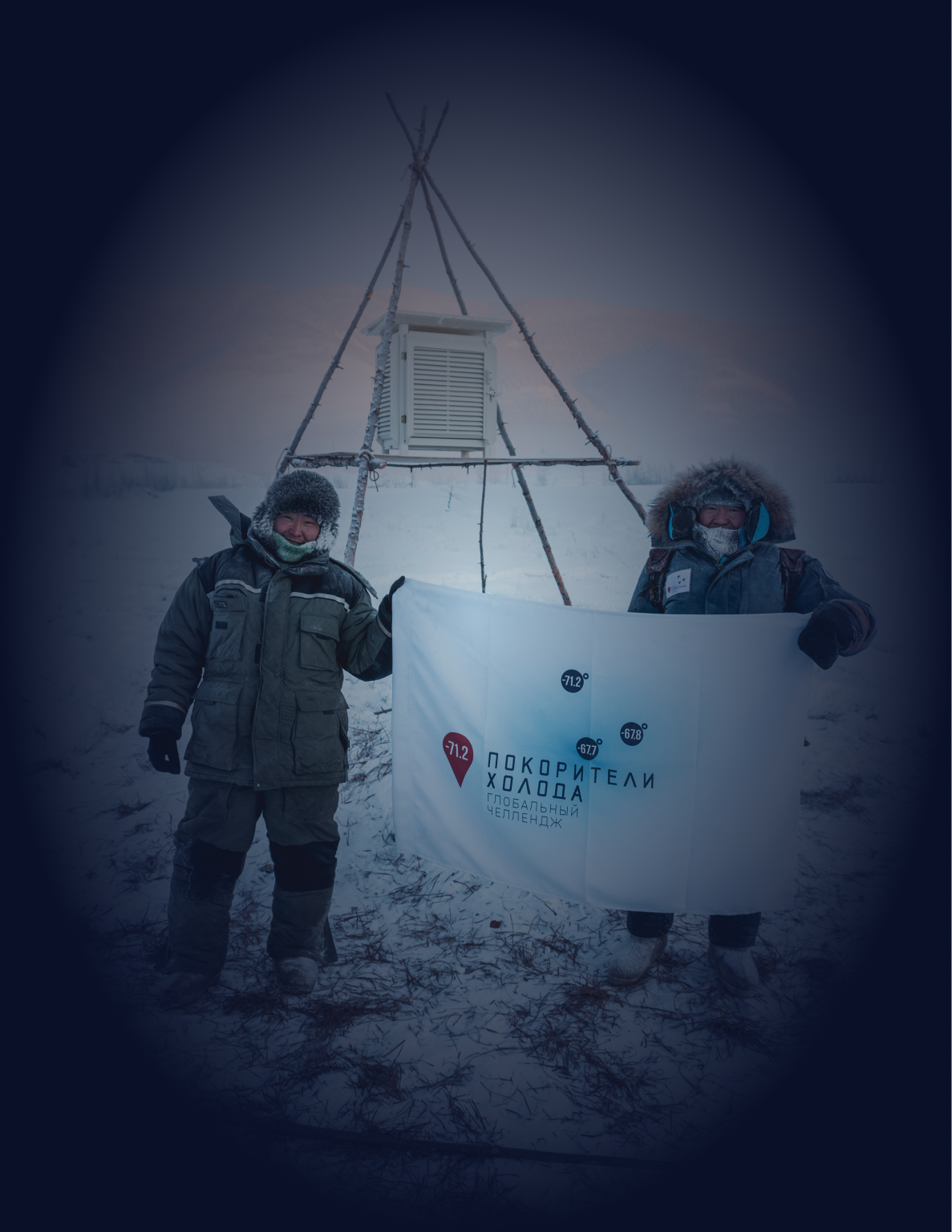



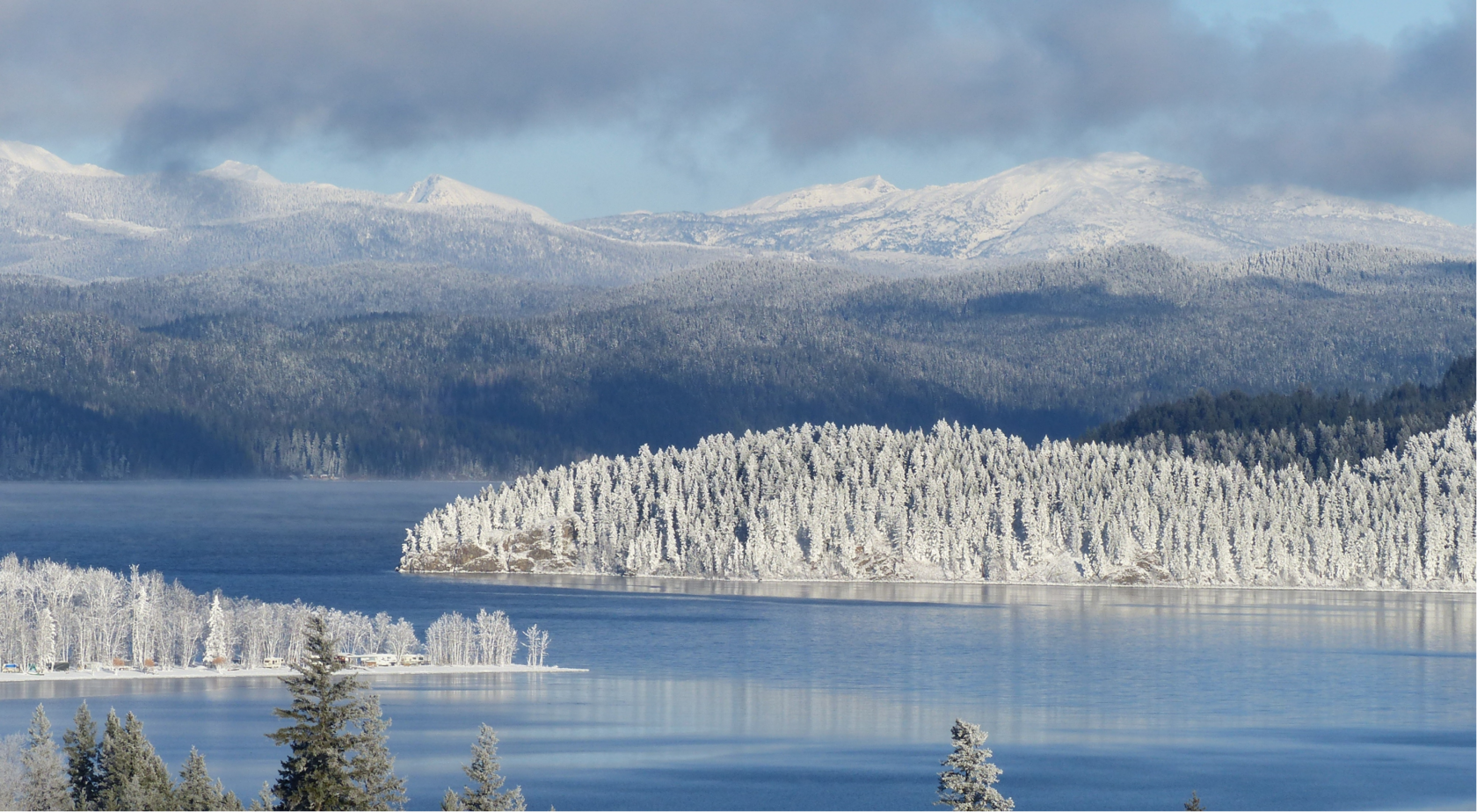


"The Cold Conquerors is the world's first and only challenge tour, a pursuit of climatic extremes. Want to catch the lowest temperature in the habitable part of the planet? You are going to have to sweat."



"The Cold Conquerors' main trophy is the officially registered lowest temperature of the year, which may be the last on Earth in the face of the global climate change."
"In January, the average temperature at the Pole of Cold corresponds to the yearly average temperature on Mars. To live in Yakutia in winter is, without exaggeration, like going to space."
"The territory between Yakutia's Verkhoyansk and Oymyakon is unique, it has no equals other than Antarctica. But here, the Pole of Cold is inhabited."
"We hope to identify the locations with the lowest temperatures in the inhabited part of the Earth that will supplement the official meteorological observations."
"The Cold Conquerors project demonstrates the capabilities of Yakutia as a testing ground for technical and living systems under extreme cold and temperature fluctuations."


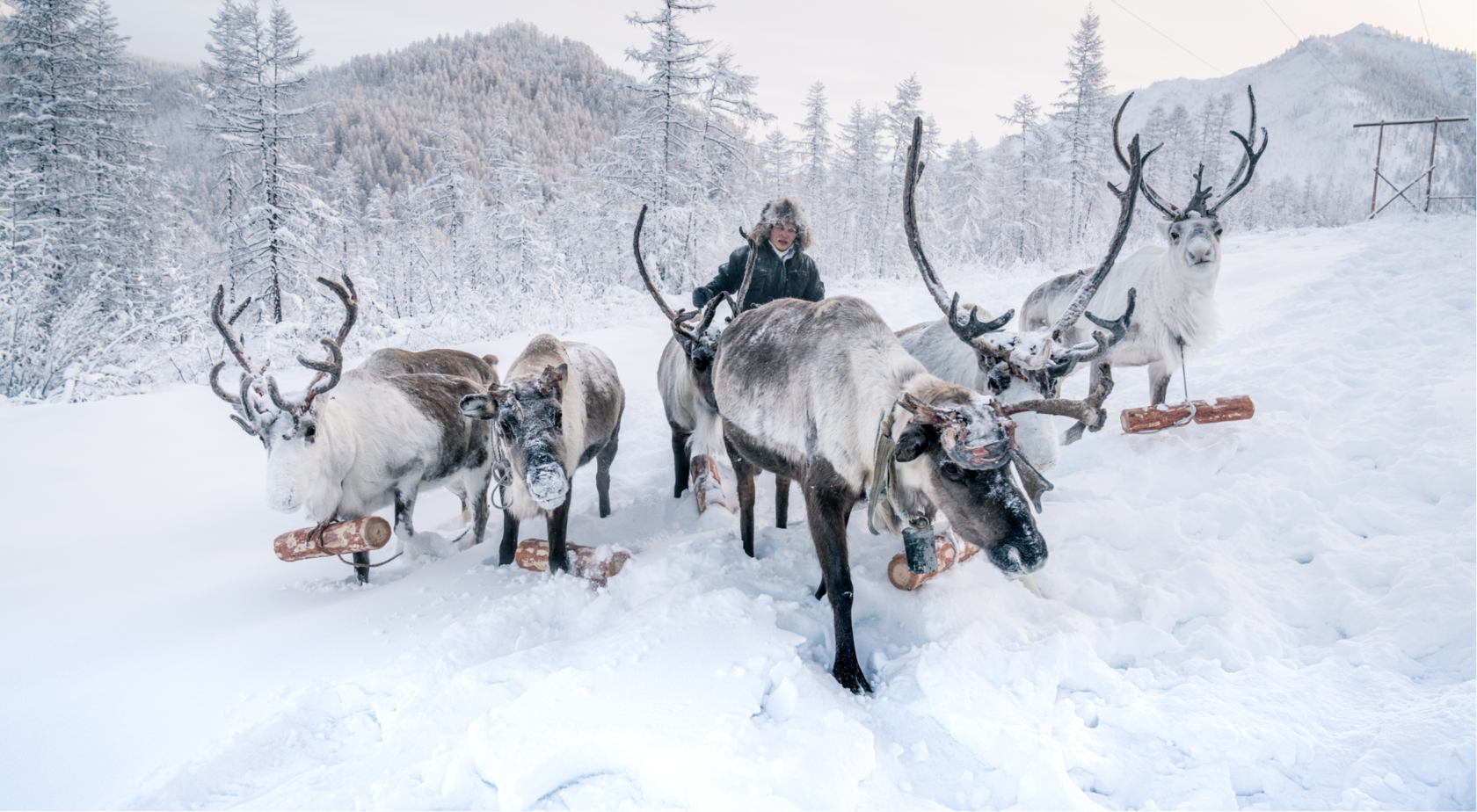

The first, test Cold Conquerors expedition took place from January 11 to 23, 2020 with the support of the Russian Geographical Society and the Government of Yakutia.
Scientists together with journalists and bloggers were divided into two groups. Accompanied by guides on reindeer sleds, they went to the Pole of Cold: to Verkhoyansk and Oymyakon settlements, to check the route, test measuring equipment and assess the living conditions of the base camps for the 2022 global challenge.
Scientists together with journalists and bloggers were divided into two groups. Accompanied by guides on reindeer sleds, they went to the Pole of Cold: to Verkhoyansk and Oymyakon settlements, to check the route, test measuring equipment and assess the living conditions of the base camps for the 2022 global challenge.


8 days
Participants of the test tour took daily temperature measurements with alcohol thermometers at 6:00 a.m., 9:00 a.m. and 12:00 p.m. according to the method approved by the Federal Service for Hydrometeorology.
-52,4°С
Temperature record of the test expedition established in the Oymyakon region. The minimum temperature in Verkhoyansk settlement for the same time period was –50.5°С.
10 participants
Each of the two groups had 5 people in it: one inspector scientist, two journalists and two guides.
100% excitement
Living in tents, when it is +22°C inside while a record-breaking frost ravages just behind a thin tarpaulin; getting trained in the Survival School by indigenous peoples of Yakutia where you master such skills as building a fire in the frost, extraction of water and cooking, deer riding, taiga hunting and ice fishing.
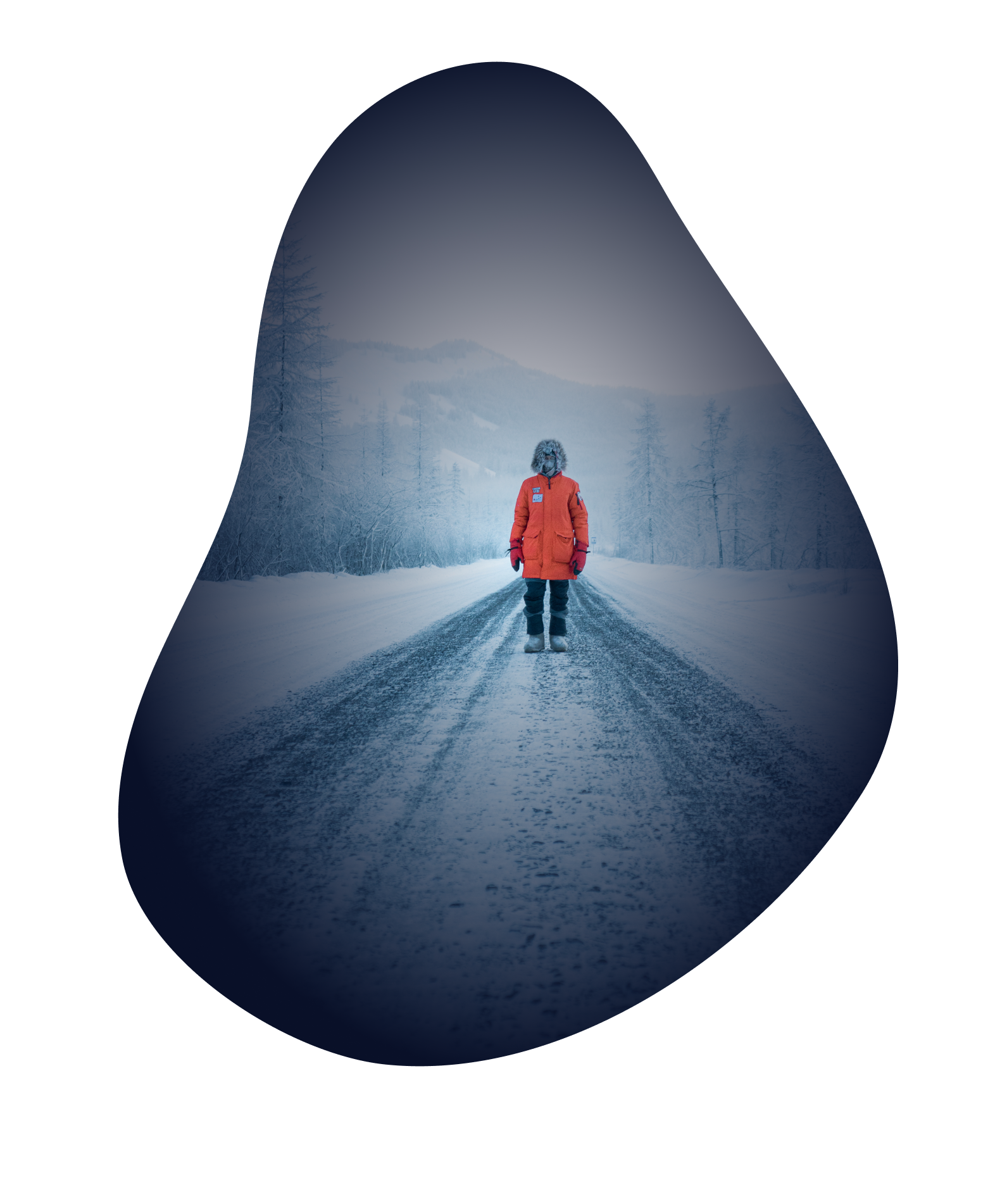

1st place Apple Photo
Russian photographer Konstantin Chalabov, a member of the test expedition, took a photo in the Tomponsky district of Yakutia and won Apple's Shot on iPhone Night Mode photo contest.
Phil Schiller

"Konstantin's photo is a super-dramatic image shot with Night mode. It could be the opening shot of a great Cold War spy movie. It challenges us with intriguing questions – 'Where is the driver? Where are they going? Why stop out here?' A cool mist permeates the blue Russian hillside and snow-covered ground, framing the lonely vehicle with bright red lights that hint at an unknown danger."
Apple's senior vice president
Brooks Kraft

"A movie-like scene that leaves you curious about what happened in this snowy remote setting. Night mode captures the blue light exterior hue beautifully as well as the incandescent lighting inside the cab of the truck and the truck lighting – a wide variety of lighting."
photographer, holder of the title of International Photographer of the Year 2013, member of the jury of the iPhone Photography Award

member of the test expedition, photographer, correspondent at Vokrug sveta magazine
Participants
expeditions 2020
Konstantin Chalabov

"When you find yourself in extreme cold, you start to really appreciate the simple things."
"Though our expedition is called Cold Conquerors, when you meet more and more locals you begin to understand who are the real conquerors there."
"This is a unique journey to the roots, because the real cold conquerors are the Yakuts and the Evens who live a full life here. When you get to know them, you realize the value of what you have. That must be the main mission of our project."


Ilia Voskresensky
Natalia Belyakova
member of the test expedition, photographer, popular travel blogger
member of the test expedition, member of the Institute of Place Management, journalist, TV presenter, associate professor at the Higher School of Economics


"It is very beautiful here! A true ice kingdom. Look at these views!"

Pavel Matveev
member of the test expedition, blogger, author of Inspiration Book 2.0

© Cold Conquerors LLC, 2019–2021
Yakutsk, Russian Federation




The website uses photos and videos courtesy of the participants of the test expedition: Pavel Matveev (@pavelmatveev), a blogger, author of 'Inspiration book 2.0', Ilia Voskresensky (@elivosk) photographer, popular travel blogger, Konstantin Chalabov (@chalabov) photographer, correspondent at Vokrug sveta magazine.














